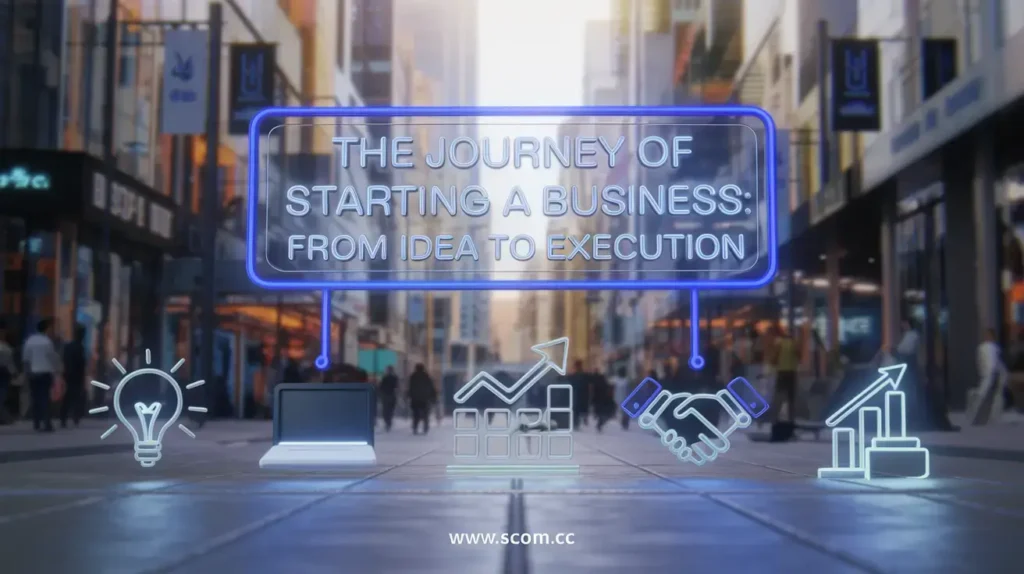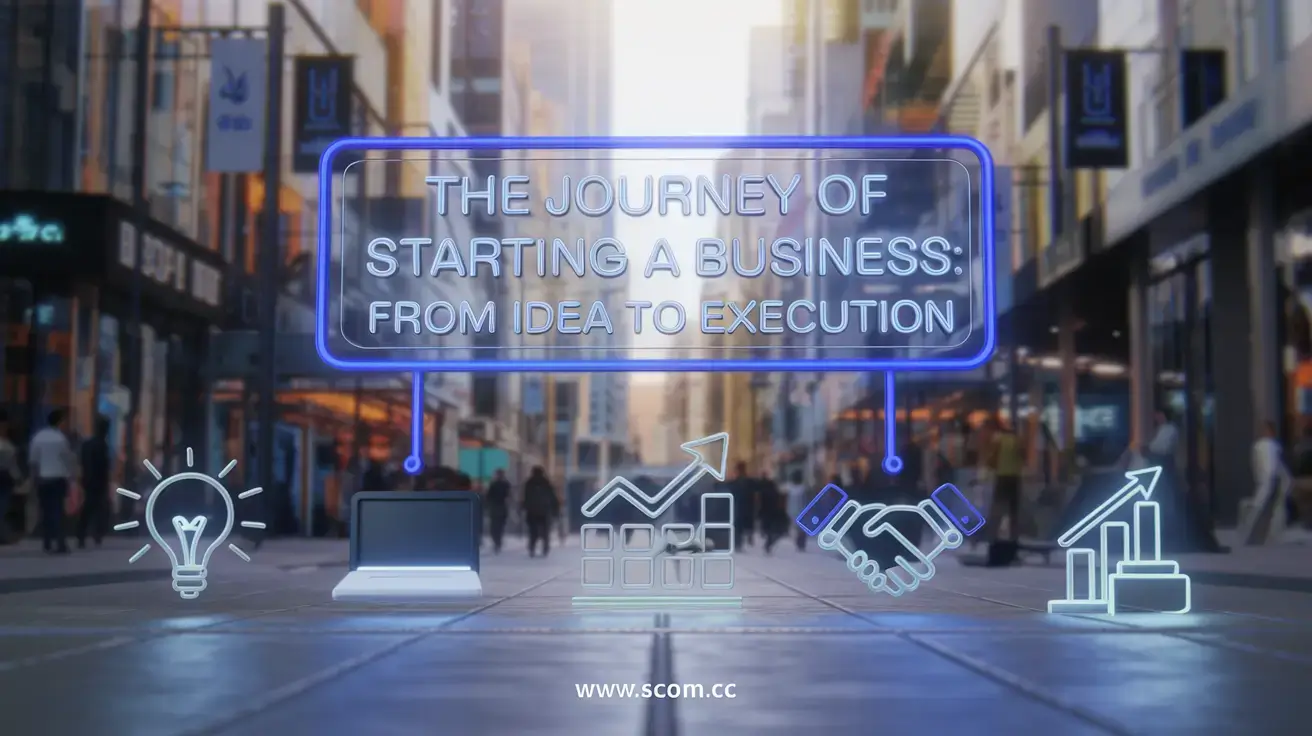The Journey of Starting a Business: From Idea to Execution

- The Journey of Starting a Business: From Idea to Execution
- 1. Ideation: Crafting Your Business Idea
- 2. Business Planning: Mapping Out Your Strategy
- 3. Legal and Administrative Setup: Laying the Foundation
- 4. Financial Planning: Securing Funding and Managing Finances
- 5. Building Your Brand: Establishing Market Presence
- 6. Launching Your Business: Bringing Your Vision to Life
- 7. Scaling and Growing: Expanding Your Business
- Conclusion
The Journey of Starting a Business: From Idea to Execution
Starting a business is a transformative journey that involves moving from a mere idea to actual execution. This journey is marked by a series of steps, each crucial for laying the foundation of a successful venture. In this comprehensive guide, we will walk you through the essential stages of starting a business, from conceptualizing your idea to bringing it to life. Whether you're an aspiring entrepreneur or someone looking to refine your startup process, this article will provide valuable insights into making your business idea a reality.
1. Ideation: Crafting Your Business Idea
The journey begins with ideation, where you generate and refine your business idea. This phase involves brainstorming, researching, and validating your concept to ensure it has the potential for success.
Identifying a Business Opportunity
- Market Research: Conduct thorough market research to identify gaps in the market or problems that need solving. Use surveys, interviews, and industry reports to gather data.
- Competitive Analysis: Analyze existing competitors to understand their strengths and weaknesses. Identify opportunities for differentiation.
Validating Your Idea
- Feasibility Study: Assess the feasibility of your idea by evaluating its market demand, financial viability, and potential challenges.
- Prototype Development: Create a prototype or a minimum viable product (MVP) to test your concept with real users and gather feedback.
2. Business Planning: Mapping Out Your Strategy
Once you have a validated idea, the next step is to develop a comprehensive business plan. A well-structured business plan serves as a roadmap for your venture, outlining your goals, strategies, and financial projections.
Creating a Business Plan
- Executive Summary: Write a compelling executive summary that outlines your business concept, objectives, and key success factors.
- Business Model: Define your business model, including how you will generate revenue, your target market, and your value proposition.
- Marketing and Sales Strategy: Develop a marketing and sales strategy to reach your target audience and drive growth.
- Financial Projections: Prepare detailed financial projections, including income statements, balance sheets, and cash flow statements.
Setting Goals and Milestones
- Short-Term Goals: Establish short-term goals to guide your initial efforts and measure progress.
- Long-Term Objectives: Define long-term objectives that align with your vision for the business and ensure sustainable growth.
3. Legal and Administrative Setup: Laying the Foundation
Before launching your business, it’s essential to handle the legal and administrative aspects. This ensures that your business operates within legal frameworks and is set up for success.
Choosing a Business Structure
- Sole Proprietorship: A simple business structure where you are the sole owner and responsible for all liabilities.
- Partnership: A structure where two or more individuals share ownership and responsibilities.
- Corporation: A separate legal entity that offers limited liability protection and potential tax benefits.
- Limited Liability Company (LLC): A hybrid structure that combines the benefits of a corporation with those of a partnership.
Registering Your Business
- Business Name: Choose and register a unique business name that reflects your brand and complies with local regulations.
- Licenses and Permits: Obtain the necessary licenses and permits required for your industry and location.
- Tax Identification: Apply for an Employer Identification Number (EIN) or other tax identification numbers.
4. Financial Planning: Securing Funding and Managing Finances
Effective financial planning is crucial for the sustainability and growth of your business. This includes securing funding, managing expenses, and ensuring proper financial management.
Securing Funding
- Personal Savings: Use your savings to fund your startup, if feasible.
- Loans: Explore business loans from banks or financial institutions.
- Investors: Seek investment from venture capitalists, angel investors, or crowdfunding platforms.
- Grants: Apply for grants available for startups and small businesses.
Managing Finances
- Budgeting: Create a detailed budget to manage your expenses and ensure financial stability.
- Accounting Systems: Implement accounting software or hire an accountant to keep track of financial transactions and reports.
5. Building Your Brand: Establishing Market Presence
Building a strong brand is essential for attracting customers and differentiating your business from competitors. This phase involves developing your brand identity and creating a market presence.
Developing Your Brand Identity
- Brand Name and Logo: Design a memorable brand name and logo that represent your business values and appeal to your target audience.
- Brand Messaging: Craft clear and compelling brand messaging that communicates your value proposition and resonates with customers.
Creating a Marketing Strategy
- Digital Marketing: Leverage digital marketing channels such as social media, email marketing, and search engine optimization (SEO) to reach your audience.
- Traditional Marketing: Use traditional marketing methods like print advertising, direct mail, and networking events to promote your business.
6. Launching Your Business: Bringing Your Vision to Life
With everything in place, it’s time to launch your business. This stage involves executing your plan, starting operations, and officially introducing your business to the market.
Executing Your Launch Plan
- Marketing Campaign: Roll out your marketing campaign to generate buzz and attract customers.
- Operational Setup: Set up your operational processes, including inventory management, customer service, and sales channels.
Monitoring and Adjusting
- Performance Metrics: Track key performance metrics to measure the success of your launch and identify areas for improvement.
- Customer Feedback: Gather feedback from customers to refine your products or services and enhance their experience.
7. Scaling and Growing: Expanding Your Business
Once your business is established, focus on scaling and growing. This involves expanding your operations, exploring new markets, and continuously improving your offerings.
Strategies for Scaling
- Diversification: Introduce new products or services to attract a broader audience.
- Geographic Expansion: Explore opportunities to expand into new geographic markets.
- Partnerships: Form strategic partnerships or alliances to enhance your reach and capabilities.
Continuous Improvement
- Innovation: Continuously innovate to stay ahead of competitors and meet evolving customer needs.
- Customer Engagement: Build strong relationships with customers through personalized experiences and excellent service.
Conclusion
The journey of starting a business, from ideation to execution, involves multiple stages, each crucial for building a successful venture. By carefully navigating each phase—ideation, business planning, legal setup, financial planning, brand building, launching, and scaling—you can transform your business idea into a thriving enterprise. Remember, success in entrepreneurship requires dedication, adaptability, and a strategic approach.

If you enjoyed this article and found it valuable, we encourage you to explore our news and valuable information section, where you'll find more relevant and up-to-date content that may pique your interest. Additionally, if you are seeking advice or need guidance on a specific topic, we suggest visiting our services section. There, you will find a variety of options designed to assist and support you in addressing your needs. Feel free to check out both sections to get the information and assistance that best suits your requirements.

Leave a Reply